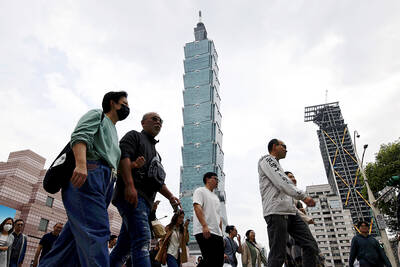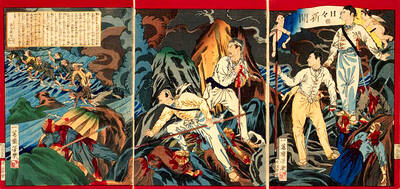VIEW THIS PAGE Tricked out in leather and heavy metal hair, the British actor Michael Sheen takes a lively break from his usual high-crust duties to bring wit, actual acting and some unexpected musculature to the goth-horror flick Underworld: Rise of the Lycans The film, a prehistory to the first two Underworld movies, rewinds time to when the werewolves, or Lycans, led by Lucian (Sheen), began rattling the chains clamped on them by their vampire masters, a louche crowd that answers to Viktor (the British actor Bill Nighy).
Set primarily in the lair of the vampires, a dark castle bathed in moon-blue light and dappled with pools of black shadow, the film offers few surprises other than Sheen’s vigorous, physical performance. Although the presence of Sheen — who can be seen twinkling as David Frost in Frost/Nixon and is probably best known for playing Prime Minister Tony Blair in The Queen — is initially distracting, it soon becomes the movie’s greatest asset. There is, as it turns out, some benefit to having a real performance even in a formulaic entertainment like this, as shown by Sheen’s commitment here and by the lackluster star turn of Kate Beckinsale in the previous movies.
Unlike Nighy, who puts an amusing camp spin on his every line and gesture, Sheen appears to have taken his monster duties seriously: his eyes pop with menace, and he howls up a mighty storm. Though the director, Patrick Tatopoulos, clearly likes the looks of the female lead, Rhona Mitra as Sonja, Viktor’s daughter and Lucian’s lover, he gives Sheen plenty of face time. The actor’s value is particularly evident during the various fight sequences, which — because they are underlighted and, as is too often the case in contemporary genre cinema, overedited — come across as needlessly chaotic. It’s at moments like these that Sheen’s bright eyes become beacons, two points of light in the murky dark. VIEW THIS PAGE

In the March 9 edition of the Taipei Times a piece by Ninon Godefroy ran with the headine “The quiet, gentle rhythm of Taiwan.” It started with the line “Taiwan is a small, humble place. There is no Eiffel Tower, no pyramids — no singular attraction that draws the world’s attention.” I laughed out loud at that. This was out of no disrespect for the author or the piece, which made some interesting analogies and good points about how both Din Tai Fung’s and Taiwan Semiconductor Manufacturing Co’s (TSMC, 台積電) meticulous attention to detail and quality are not quite up to

April 21 to April 27 Hsieh Er’s (謝娥) political fortunes were rising fast after she got out of jail and joined the Chinese Nationalist Party (KMT) in December 1945. Not only did she hold key positions in various committees, she was elected the only woman on the Taipei City Council and headed to Nanjing in 1946 as the sole Taiwanese female representative to the National Constituent Assembly. With the support of first lady Soong May-ling (宋美齡), she started the Taipei Women’s Association and Taiwan Provincial Women’s Association, where she

Chinese Nationalist Party (KMT) Chairman Eric Chu (朱立倫) hatched a bold plan to charge forward and seize the initiative when he held a protest in front of the Taipei City Prosecutors’ Office. Though risky, because illegal, its success would help tackle at least six problems facing both himself and the KMT. What he did not see coming was Taipei Mayor Chiang Wan-an (將萬安) tripping him up out of the gate. In spite of Chu being the most consequential and successful KMT chairman since the early 2010s — arguably saving the party from financial ruin and restoring its electoral viability —

It is one of the more remarkable facts of Taiwan history that it was never occupied or claimed by any of the numerous kingdoms of southern China — Han or otherwise — that lay just across the water from it. None of their brilliant ministers ever discovered that Taiwan was a “core interest” of the state whose annexation was “inevitable.” As Paul Kua notes in an excellent monograph laying out how the Portuguese gave Taiwan the name “Formosa,” the first Europeans to express an interest in occupying Taiwan were the Spanish. Tonio Andrade in his seminal work, How Taiwan Became Chinese,